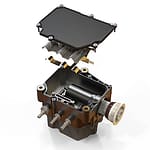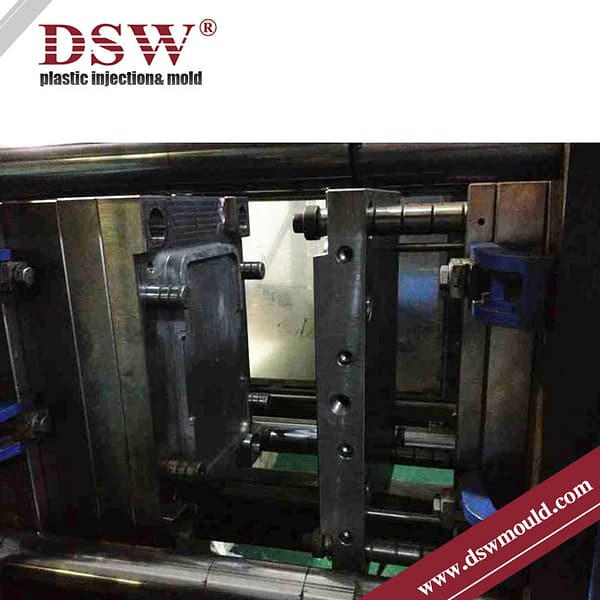What are Injection Mold Gates?
An injection molding gate is a designed opening, usually small, that controls the flow of molten plastic into the mold cavity during the injection molding process.
Gates are tiny connecting points between a runner and a mold cavity.
It serves as a channel or opening through which plastic material is injected under high pressure.
The gate type, location, dimensions, material, and mold type all influence the amount, pressure, and temperature of the molten plastic during injection molding.
Proper gate design ensures optimal packing, minimizes pressure drop, and maintains acceptable shear rates.
Larger gate sizes result in longer packing stages and lower required filling pressures.
Purpose of the Gate
The gate serves as the entry point where molten plastic is introduced into the mold cavity.
It acts as a channel or opening through which plastic material is injected under high pressure.
Proper gate design ensures the success of your injection molded parts by managing the volume and direction of plastic flow.
Importance of Gate Design
A well-designed gate ensures the success of your injection molded parts.
The injection molding gate manages the volume and direction of molten plastic flow, preventing it from flowing toward the runner or nozzle.
Proper gate placement ensures that molten plastic reaches every area of the mold before cooling, preventing uneven hardening and deformations.
Additionally, the gate design helps dissipate heat, reducing the formation of flow marks and weld lines.
Gate Location Matters
The gate is a small opening between the runner and the mold cavity.
Correct gate placement is crucial for process success and part quality.
Wrong gate positioning can lead to defects like flash, weak spots, fractures, and uneven thickness.
Choosing the right gate location ensures proper gate size and timing, contributing to successful injection molding1.
Remember, a well-designed gate is essential for efficient plastic flow and high-quality injection-molded components!
11 Types of Injection Molding Gates:
Direct or Sprue Gates: These are simple and commonly used gates. The direct gate connects directly to the runner and allows molten plastic to flow into the mold cavity. It’s straightforward and efficient.
Edge Gates: Among the most popular gate types, edge gates are straightforward in design. They are positioned at the edge of the part and allow molten plastic to flow smoothly into the mold cavity. Edge gates are commonly used for flat or thin parts.
Submarine Gates: These gates are located beneath the part’s surface. They provide a discreet entry point for molten plastic, minimizing visible gate marks on the finished part. Submarine gates are suitable for parts with aesthetic requirements.
Cashew Gates: Shaped like a cashew, these gates are ideal for parts with thick cross-sections. They allow controlled plastic flow and prevent warping or distortion during cooling.
Diaphragm Gates: Diaphragm gates create a thin, flat gate that minimizes visible marks on the part. They are commonly used for cosmetic parts where gate visibility is critical.
Hot Runner Valve Gates: These advanced gates use a heated manifold system to maintain molten plastic temperature. They eliminate the need for runners and reduce post-processing efforts.
Hot Runner Thermal Gates: Similar to hot runner valve gates, thermal gates maintain plastic temperature. They are suitable for large parts and complex geometries.
Fan Gates: Fan gates distribute molten plastic across the part’s surface. They are useful for multi-cavity molds and parts with varying thicknesses.
Optimizing Mold Gate Design for Enhance
The selection of the gate type and its placement depend on various factors, including the part design, material properties, molding process requirements, and desired aesthetics.Proper gate design is crucial for achieving optimal part quality and minimizing defects. A well-designed gate ensures uniform material distribution, avoids air entrapment, and controls flow fronts to prevent issues like short shots, weld lines, or part distortion. Proper gate design is essential for achieving optimal part quality, minimizing defects, and ensuring efficient production in injection molding processes.













No comment